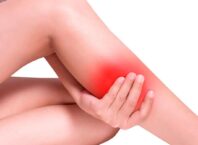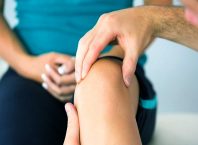If you are having knee pain when sitting on heels, several causes might be related to joint dysfunction.
A lot of people who practice yoga and martial arts says that they are often experiencing knee pain when sitting on heels at some point in their time.
Have you ever heard of the Seiza sitting position in Japanese culture? Can you do it without problems?

How sitting on your heels feels like?
When you are sitting on your heels, your leg is somewhat in an uncomfortable position. Your weight heavily compresses the tissues of the knee joint.
In this position, your kneecap is extended, while the back of the knee is folded.
This is resulting in the improper circulation of your blood that is usually going through your legs and vice versa.
If the blood circulation is blocked, your legs will feel numb. You might sense a flow of your blood rushing back when you straighten or when you are standing up.
Although with some practice, your body will adapt to sitting seiza comfortably as Japanese people do.
What causes knee pain when sitting on heels?
As we mentioned before, a typical reason why you feel the pain when sitting in that position is due to blockage of blood circulation and pressure on your joints.
However, several conditions might be related to knee pain when sitting on top of your heels.
1. Obesity
This is self-explanatory.
Obesity or overweight, along with other health conditions, may have contributes to knee pain when sitting on heels.
More mass in your thighs and your calves can make your butt cheek more difficult to touch your heels. As a result, your knee received more pressure.
2. Plantar flexion inability
According to healthline.com, Plantar flexion is a movement in which the top of your foot and leg ended up in a straight line. For example, a ballerina’s foot position.
Every person has a different ability to do a movement in this position.
When you are sitting on your heels, your legs are forcing you to make a straight line flat to the ground.
Any injury to these plantar-flexion muscles can limit your leg straightness and make it difficult to sit on top of your heels.
3. Knee tightness and stiffness
Tightness in your knee joint can be caused by injuries, muscle and bone problems, or inflammation.
Lack of flexibility due to muscle tightness is one of the contributing factors to pain in the knee when bending and straightening it.
4. Chondromalacia patella
Runner’s knee is a common name for this condition.
Chondromalacia patella happens where the cartilage tissue on the undersurface of the kneecap deteriorates and softens.
People who do sports and athletic individuals have more risk. Though it also occurs in older adults who have inflammation of the joint due to arthritis.
Common symptoms of the runner’s knee are pain and grinding sensations when moving the knee.
5. Meniscus Tear
According to knee anatomy, the meniscus is two pairs of cartilage between the thighbone and shinbone that act as a shock absorber in the joint.
Usually, a meniscus tear often happens during sports or substantial activity.
The elderly are at higher risk to have meniscus tears due to degeneration as they age over time. Resulting in the cartilage becoming weak and worn out through life.
One of the symptoms of a meniscus tear is a pop sensation in the joint following the inability to move the knee through its complete range of motion.
This is resulting in knee pain when sitting on heels as it requires you to bend your legs close to your hips extensively.
Things you can do to handle the pain
- Take a rest from the offending activity.
- If there is a sign of disease, consult a doctor or specialist if the pain is limiting your daily life.
- With proper stretches and appropriate practice over time, the seiza position can be easily mastered.
Resources:
- Healthline: Plantar Flexion. https://www.healthline.com/health/plantar-flexion
- Orthoinfo: Meniscus tear. https://orthoinfo.aaos.org/en/diseases–conditions/meniscus-tears
















Is It Normal to Feel Pain Months After Hernia Surgery? Let’s...